Today I’ll share with you the secrets of creating the perfect Coppia Ferrarese, the iconic Italian twisted bread. Mastering this delightful delicacy looks like a challenge, but fear not! Get ready to impress your loved ones with your newfound skills as I guide you on how to make Coppia Ferrarese in your kitchen.
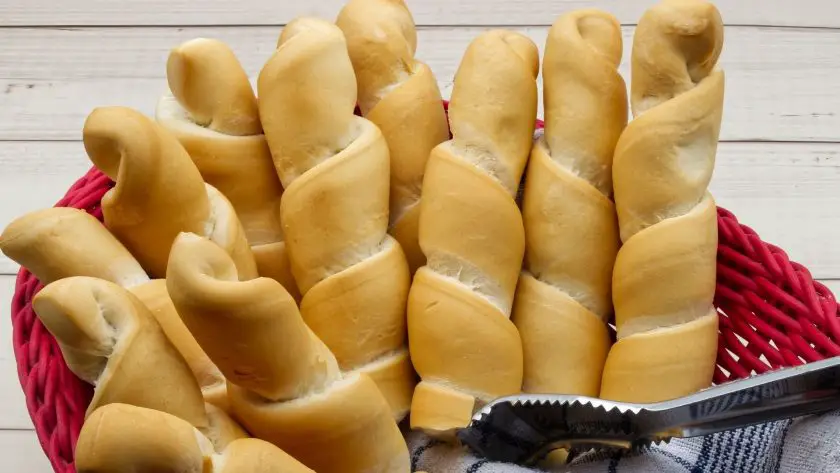
Table of Contents
- Ingredients
- Leaven Ingredients and Preparation
- Preparation Steps
- Proofing and Baking
- Pairings
- Sourdough and Swirls
- How to Make Coppia Ferrarese: FAQs
Ingredients
To make authentic Coppia Ferrarese, you’ll need:
- 3 cups (360g) bread flour or all-purpose flour
- Substitute: Italian “00” flour for a more authentic taste and texture
- 1 tsp (3g) active dry yeast (if you’d like to go with starter, see the section below)
- Substitute: Instant yeast (rapid-rise or quick-rise), using 25% less than the recipe calls for
- 1 tsp (6g) fine sea salt or kosher salt
- Substitute: Table salt, using slightly less as it’s more concentrated
- 1 1/4 cups (295ml) lukewarm water (105°F to 110°F)
- Note: Water temperature is crucial for activating the yeast properly
Leaven Ingredients and Preparation
Leaven plays a crucial role in creating the distinct texture and flavor of Coppia Ferrarese. It’s the secret ingredient that brings this traditional Italian bread to life, transforming simple flour and water into a delightful, aromatic masterpiece.
Let’s explore the different types of leaven you can use and guide you through the process of preparing and incorporating it into your dough.
Choosing the Right Leaven
You have two main options for leavening: natural leaven (sourdough starter) or commercial yeast. Each has its unique benefits and drawbacks.
Sourdough starter, made from a mixture of flour and water that’s left to ferment, lends a tangy, complex flavor to the bread. It’s a slower process, but the result is a loaf with an unparalleled depth of taste and a slightly chewy texture. Plus, many people find that bread made with sourdough is easier to digest.
On the other hand, commercial yeast (either instant or active dry) is a more convenient option. It provides a reliable, quick rise and a milder flavor. If you’re short on time or prefer a more neutral taste, this might be the way to go.
Preparing the Leaven
Whether you choose sourdough or commercial yeast, proper preparation is key to ensuring a successful bake. Here’s a step-by-step guide:
For sourdough starter:
- Feed your starter with equal parts flour and water, and let it sit at room temperature until it doubles in size and becomes bubbly (usually around 4-8 hours).
- Once your starter is active, measure out the amount needed for your recipe.
For commercial yeast:
- If using active dry yeast, dissolve it in a portion of the lukewarm water called for in the recipe. Let it sit for 5-10 minutes until foamy.
- Instant yeast can be mixed directly into the dry ingredients.
Tip: Use a kitchen thermometer to ensure your water is at the optimal temperature (105°F to 110°F) for activating the yeast.
Incorporating the Leaven into the Dough
Now that your leaven is ready, it’s time to mix it into the dough. Here’s how to do it:
- In a large mixing bowl, combine the flour and salt.
- Create a well in the center of the flour mixture and pour in the prepared leaven (sourdough starter or yeast mixture).
- Gradually mix the flour into the leaven, adding the remaining water as needed, until a shaggy dough forms.
- Turn the dough out onto a floured surface and knead until smooth and elastic.
Tip: If using a stand mixer, use the dough hook attachment to knead the dough on low speed for 5-7 minutes.
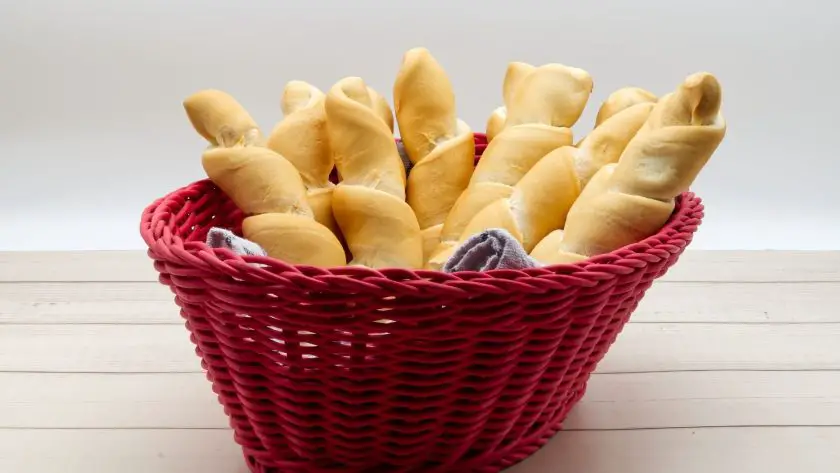
Preparation Steps
Mixing the Ingredients
First things first, we need to mix our ingredients. In a large bowl, combine the flour, yeast, and salt. Give it a quick whisk to ensure everything is evenly distributed. Now, slowly pour in the lukewarm water while stirring the mixture with a wooden spoon or your hands. Keep mixing until all the ingredients come together to form a shaggy, sticky dough.
Tip: If you’re using instant yeast, you can mix it directly with the dry ingredients. If you’re using active dry yeast, dissolve it in a portion of the lukewarm water before adding it to the flour mixture.
Kneading the Dough
Now comes the fun part – kneading!
Transfer the dough onto a lightly floured surface and get ready to put some muscle into it. Start by folding the dough over itself and pressing it down with the heel of your hand. Give it a quarter turn, fold, and press again. Repeat this process for about 10-15 minutes, or until the dough becomes smooth, elastic, and no longer sticky.
Kneading is crucial. As you knead, the dough will transform from a shaggy mess to a smooth, pliable ball. It’s like watching magic happen right before your eyes!
Tip: If the dough feels too sticky, resist the urge to add more flour. Instead, use a bench scraper to help lift and fold the dough. Adding too much flour can result in a dense, heavy loaf.
Letting the Dough Rest
After all that kneading, your dough deserves a break – and so do you! Shape the dough into a ball and place it in a lightly oiled bowl. Cover the bowl with a damp kitchen towel or plastic wrap and let it rest in a warm, draft-free spot for about an hour, or until it doubles in size.
Tip: To create a warm environment for your dough to rise, you can place the bowl in a turned-off oven with the light on, or fill a separate bowl with boiling water and place it alongside your dough in a closed space, like a microwave or a large pot.
Shaping the Coppia Ferrarese
Once your dough has doubled in size, it’s time to shape it into the iconic Coppia Ferrarese form. Gently punch down the dough to release the excess gas and divide it into two equal portions. Roll each portion into a long rope, about 20 inches in length.
Now, take the two ropes and twist them together, forming a spiral shape. Pinch the ends together to seal the twist and tuck them underneath the loaf. Place the shaped dough onto a baking sheet lined with parchment paper and cover it with a damp kitchen towel.
Let the shaped dough rest for another 30-45 minutes, or until it has puffed up and nearly doubled in size. This second rise is crucial for achieving a light, airy texture in your final loaf.
Tip: If you’re having trouble shaping the dough, don’t worry! It takes practice to get the perfect twist. Remember, even if your loaf doesn’t look picture-perfect, it will still taste delicious.
Proofing and Baking
Now it’s time to let it proof and then bake it to perfection. This final stage is where your hard work pays off, and you’ll be rewarded with a stunning, delicious loaf of traditional Italian bread.
The Final Proof
Before you preheat your oven, your shaped dough needs to undergo one last proofing session. This step, also known as the final rise or final fermentation, allows the dough to expand and develop its final structure.
Place your shaped Coppia Ferrarese on a baking sheet lined with parchment paper, and cover it loosely with a clean, damp kitchen towel or plastic wrap. Let it rest in a warm, draft-free spot for about 45 minutes to an hour, or until it has nearly doubled in size.
Tip: To test if your dough is ready for baking, gently poke it with your finger. If the indentation slowly springs back, it’s ready to go. If it bounces back quickly, it needs a bit more time.
Oven Settings and Baking
While your dough is proofing, preheat your oven to 450°F (230°C). If you have a baking stone, place it in the oven during the preheating process. A baking stone helps to distribute heat evenly and promotes a crispy crust.
Just before placing your loaf in the oven, use a sharp knife or razor blade to make a few diagonal slashes across the top of the dough. These slashes, known as scoring, allow the bread to expand during baking without tearing the surface.
Transfer your scored Coppia Ferrarese to the preheated oven, either directly onto the baking stone or on the parchment-lined baking sheet. Bake for 30-35 minutes, or until the crust is deep golden brown and the loaf sounds hollow when tapped on the bottom.
Tip: For an extra crispy crust, create steam in your oven by placing a metal tray on the bottom rack during preheating. When you put your loaf in the oven, pour a cup of hot water into the tray, quickly close the door, and let the steam work its magic!
Cooling and Enjoying Your Coppia Ferrarese
Once your Coppia Ferrarese is baked to perfection, remove it from the oven and transfer it to a wire rack to cool. Resist the urge to slice into it right away, as the bread continues to cook and set its structure during the cooling process.
After about an hour, your Coppia Ferrarese should be ready to slice and enjoy. Serve it alongside your favorite Italian meals, use it to make sandwiches, or simply savor it on its own with a drizzle of olive oil and a sprinkle of sea salt.
Pairings
When it comes to wine pairing, this bread shines alongside bold Italian reds like Chianti, Barbera, or Nero d’Avola. These wines have enough structure to stand up to the bread’s hearty nature, while their fruity notes enhance the overall taste experience. For a refreshing contrast, try serving Coppia Ferrarese with a chilled glass of Prosecco or Pinot Grigio.
No Italian meal is complete without a selection of delicious cheeses, and Coppia Ferrarese is no exception. Pair this bread with aged Parmigiano-Reggiano for a classic flavor combination, or spread some fresh ricotta on top for a heavenly bite. If you’re feeling adventurous, experiment with other Italian cheeses like tangy Pecorino Romano or smooth Taleggio.
Coppia Ferrarese is also a versatile bread that pairs well with many traditional Italian dishes. Serve it alongside a hearty minestrone or a classic pasta like spaghetti bolognese. For a lighter pairing, enjoy Coppia Ferrarese with a Caprese salad featuring ripe tomatoes, fresh mozzarella, and fragrant basil. Remember, the key is to have fun and experiment with flavors to discover your perfect pairings!
For more Italian breads:
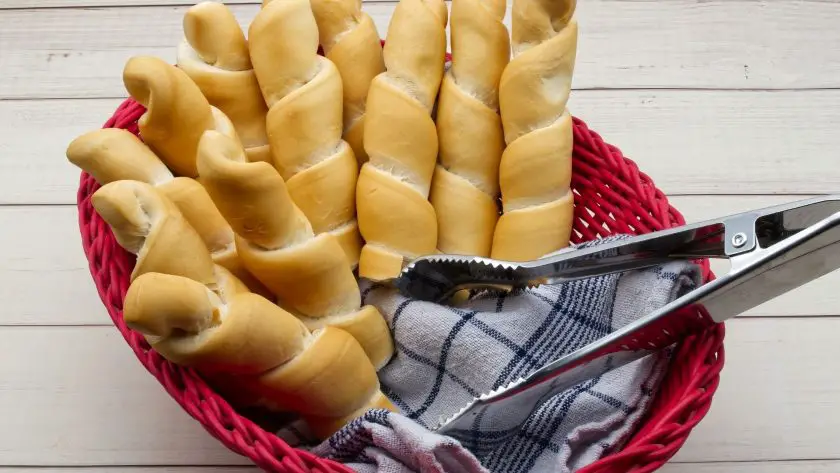
Sourdough and Swirls
Making authentic Coppia Ferrarese is a rewarding experience that brings the taste of Italy to your home. Following the step-by-step guide, from choosing the right ingredients to shaping and baking, you’ll create a stunning loaf with a crispy crust and complex flavor. Pairing your homemade Coppia Ferrarese with bold Italian wines, savory cheeses, and classic dishes will help you fully appreciate its versatility and deliciousness.
How to Make Coppia Ferrarese: FAQs
How do you eat coppia Ferrarese?
Coppia Ferrarese is a twisted Italian bread that is typically served as a snack or appetizer. It can be enjoyed on its own, torn into pieces, or served alongside cured meats, cheeses, and spreads like butter or olive oil. The bread has a crispy crust and a soft, slightly chewy interior, making it a versatile and delicious addition to any meal.
What is the meaning of coppia Ferrarese?
Coppia Ferrarese, which translates to “Ferrara couple” in English, is a traditional Italian bread originating from the city of Ferrara in the Emilia-Romagna region. The bread is named for its distinctive shape, which resembles two intertwined arms or a twisted pair. This unique shape is said to symbolize the union of two people in love, making it a popular bread for weddings and other celebrations.
What is an example of a fermented dough?
Sourdough bread is a classic example of a fermented dough. The dough is made using a starter culture, which is a mixture of flour and water that has been allowed to ferment and develop wild yeast and bacteria. This fermentation process gives sourdough bread its distinctive tangy flavor, chewy texture, and improved digestibility compared to bread made with commercial yeast.
What is sourdough bread made of?
Sourdough bread is made using a simple combination of flour, water, and salt, along with a sourdough starter. The starter is a fermented mixture of flour and water that contains wild yeast and bacteria, which leaven the bread and give it its characteristic flavor and texture. Some variations may include additional ingredients like whole grains, seeds, or herbs for added flavor and nutrition.
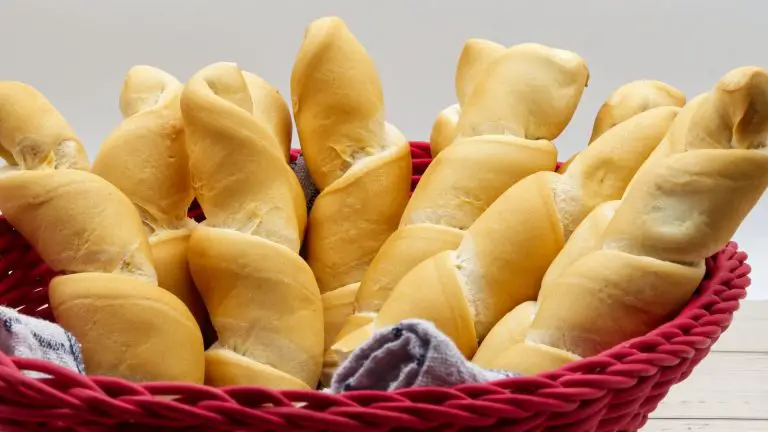
Sourdough Coppia Ferrarese
Check out this recipe for making Coppia Ferrarese with sourdough starter.
Ingredients
- 3 cups (360g) bread flour or all-purpose flour (substitute: Italian “00” flour)
- 1 cup (200g) active sourdough starter
- 1 tsp (6g) fine sea salt or kosher salt (substitute: table salt, using slightly less)
- 3/4 cup to 1 cup (175ml to 235ml) lukewarm water (105°F to 110°F)
Instructions
Sourdough starter
- Feed your starter with equal parts flour and water, and let it sit at room temperature until it doubles in size and becomes bubbly (usually around 4-8 hours).
- Once your starter is active, measure out the amount needed for the recipe (1 cup or 200g).
Preparation
- In a large bowl, combine the flour, yeast, and salt. Whisk to ensure even distribution.
- Slowly pour in the lukewarm water while stirring with a wooden spoon or your hands until a shaggy, sticky dough forms.
- Transfer the dough onto a lightly floured surface and knead for 10-15 minutes until smooth, elastic, and no longer sticky.
- Shape the dough into a ball and place it in a lightly oiled bowl. Cover with a damp kitchen towel or plastic wrap and let it rest in a warm, draft-free spot for about an hour, or until doubled in size.
- Punch down the dough to release excess gas and divide it into two equal portions.
- Roll each portion into a long rope, about 20 inches in length.
- Twist the two ropes together, forming a spiral shape. Pinch the ends together to seal and tuck them underneath the loaf.
- Place the shaped dough onto a baking sheet lined with parchment paper and cover with a damp kitchen towel. Let it rest for another 30-45 minutes, or until it has nearly doubled in size.
Proofing and Baking
- Preheat the oven to 450°F (230°C). If using a baking stone, place it in the oven during preheating.
- Make diagonal slashes across the top of the dough using a sharp knife or razor blade.
- Transfer the scored Coppia Ferrarese to the preheated oven, either directly onto the baking stone or on the parchment-lined baking sheet.
- For an extra crispy crust, create steam by placing a metal tray on the bottom rack during preheating and pour a cup of hot water into the tray when placing the loaf in the oven.
- Bake for 30-35 minutes, or until the crust is deep golden brown and the loaf sounds hollow when tapped on the bottom.
- Remove from the oven and transfer to a wire rack to cool for about an hour before slicing and serving.
Notes
- The amount of water needed may vary depending on the hydration level of your sourdough starter and the humidity in your environment. Start with 3/4 cup and add more water gradually as needed to achieve a shaggy, sticky dough.
- Category: bread
- Cuisine: Italian

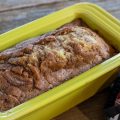
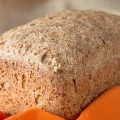
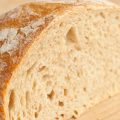
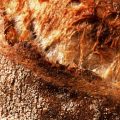
![How To Make Bazlama [Turkish Flat Bread Recipe] 118 How to make bazlama [turkish flat bread recipe]](https://www.mydailysourdoughbread.com/wp-content/uploads/2024/03/Bazlama-4-120x120.jpg)
